Address
304 North Cardinal
St. Dorchester Center, MA 02124
Work Hours
Monday to Friday: 7AM - 7PM
Weekend: 10AM - 5PM
Address
304 North Cardinal
St. Dorchester Center, MA 02124
Work Hours
Monday to Friday: 7AM - 7PM
Weekend: 10AM - 5PM
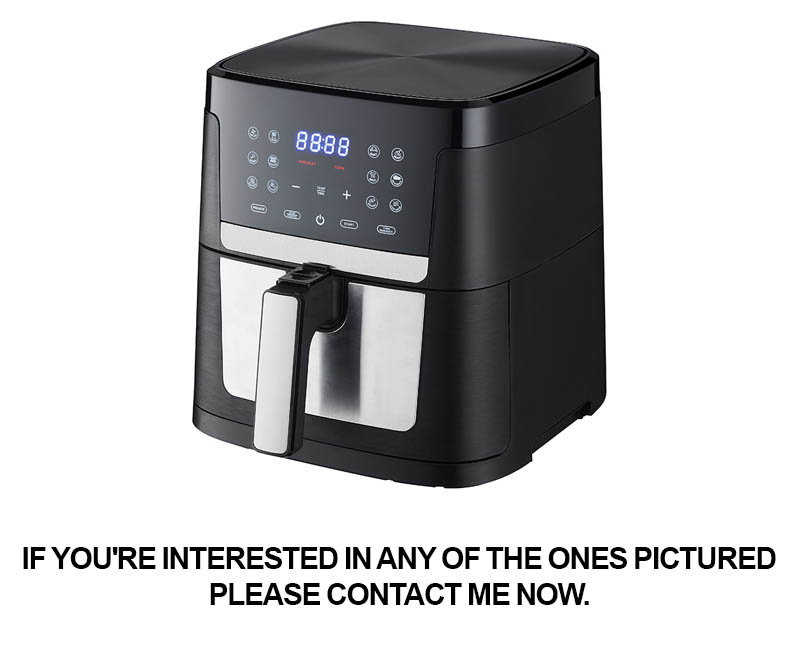
In a world where culinary innovation meets technological advancement, the air fryer has emerged as a game-changer in the kitchen appliance sector. As we delve into the intricacies of Original Design Manufacturing (ODM) and the Chinese market’s role in shaping this revolution, it’s fascinating to explore the journey from concept to creation. Join us as we uncover the essence of the 30-day air fryer challenge, the design process that brings ideas to life, and the insights that drive the future of air fryers.
The Air Fryer Revolution: A Quick Glance
In the ever-evolving landscape of kitchen appliances, the air fryer has emerged as a game-changer, revolutionizing the way we cook and live healthier. Once a niche product, air fryers have now become a staple in many households across the globe. Let’s take a brief glance at how this marvel has transformed the culinary world.
Gone are the days when deep-frying was the only way to enjoy crispy, golden fried foods. The advent of air fryers introduced a healthier alternative that allows us to savor the taste and texture of fried treats without the added calories and fats. The technology behind air fryers is quite fascinating—it uses hot air to circulate around the food, resulting in a crispy outer layer while keeping the inside tender and juicy.
The popularity of air fryers has surged due to their numerous benefits. Firstly, they are much more energy-efficient compared to traditional deep fryers. This not only reduces electricity bills but also helps in minimizing our carbon footprint. Secondly, air fryers are incredibly versatile. They can be used to fry, roast, grill, and bake a wide range of foods, making them a must-have for any kitchen enthusiast.
As the demand for air fryers continues to rise, manufacturers are constantly innovating to bring more advanced models to the market. Modern air fryers often come with features like digital temperature controls, timer settings, and even preset programs for different types of foods. These innovations make air frying a breeze, even for those who are not experts in the kitchen.
One of the most compelling reasons for the air fryer’s rise in popularity is its health benefits. Traditional frying methods often lead to the absorption of excess oil, resulting in foods that are higher in calories and fats. In contrast, air frying uses a fraction of the oil, significantly reducing the calorie count of your favorite dishes. This has made air fryers a favorite among health-conscious consumers looking to indulge in their favorite comfort foods without compromising their dietary goals.
Moreover, the convenience of air fryers cannot be overstated. They are compact, easy to use, and clean up in a jiffy. This makes them perfect for busy lifestyles and those who prefer quick and hassle-free cooking solutions. The ability to cook a variety of dishes in one appliance has also made them a space-saving addition to any kitchen.
The market for air fryers has expanded to cater to a diverse range of preferences and needs. From budget-friendly models to high-end, feature-rich air fryers, there’s something for everyone. The variety of brands and designs available ensures that consumers can find an air fryer that not only fits their budget but also complements their kitchen decor.
In terms of market trends, the air fryer industry is witnessing rapid growth, with more and more consumers switching to this healthier cooking method. The demand for air fryers has also driven the development of complementary products, such as air fryer accessories, cookbooks, and even air fryer-specific oils, making the experience even more enjoyable and convenient.
Furthermore, the rise of social media and influencer marketing has played a significant role in popularizing air fryers. With countless recipes and cooking tips being shared online, air fryers have become a staple in the social media world. This has not only sparked a sense of community among air fryer enthusiasts but has also encouraged more people to try this innovative cooking method.
As we continue to embrace healthier lifestyles, the air fryer is poised to become an even more integral part of our kitchens. With advancements in technology and design, it’s clear that the air fryer revolution is far from over. The future holds exciting possibilities, from new cooking techniques to enhanced health benefits, making the air fryer an indispensable tool in the modern kitchen.

ODM, or Original Design Manufacturing, is a business model that has become increasingly popular in the global manufacturing landscape. It’s a process where a manufacturer, often located in a country like China, takes a design provided by a client and produces the final product. Let’s delve into the intricacies of ODM and understand why it’s a preferred choice for many companies worldwide.
The core of ODM revolves around design and customization. Unlike OEM (Original Equipment Manufacturing), where the manufacturer produces products based on existing designs, ODM involves a level of creativity and innovation. Clients provide the initial concept or specifications, and the manufacturer then works to bring that concept to life, often with their own input and suggestions.
One of the key advantages of ODM is the ability to cater to niche markets. Companies that have unique or specialized product ideas can benefit from ODM by finding a manufacturer that can tailor the product to their exact needs. This is particularly useful in industries where products must meet specific regulatory standards or have unique features that set them apart from competitors.
The ODM process typically starts with a thorough understanding of the client’s requirements. This involves detailed discussions, sketches, and prototypes to ensure that the manufacturer fully grasps the client’s vision. It’s a collaborative effort that requires open communication and a willingness to iterate and refine the design.
Once the design is finalized, the manufacturer takes on the role of product developer. They source the necessary materials, develop the manufacturing process, and even handle quality control. This comprehensive approach allows clients to focus on other aspects of their business, such as marketing and sales, while the manufacturer manages the production side.
One of the standout benefits of ODM is cost efficiency. By working with a single supplier, clients can often negotiate better prices for materials and manufacturing. This can be particularly advantageous for companies looking to enter new markets or scale up their production without a significant upfront investment.
In terms of quality, ODM offers a high level of control. Since the manufacturer is responsible for the entire process, from design to final product, they have a vested interest in ensuring that the end result meets or exceeds the client’s expectations. This often leads to a more rigorous quality assurance process, with checks and balances at every stage of production.
Another important aspect of ODM is the flexibility it offers. Clients can easily modify their product designs or introduce new features without having to switch manufacturers. This agility is crucial in a fast-paced market where consumer preferences can change rapidly.
The ODM model also supports innovation. Manufacturers often have a wealth of experience and expertise that they can bring to the table. They may suggest improvements or alternative materials that can enhance the product’s performance, durability, or aesthetic appeal.
From a logistical standpoint, ODM can streamline the supply chain. By consolidating production under one roof, clients can reduce the complexity of managing multiple suppliers. This can lead to more efficient production cycles and faster time-to-market for new products.
In the realm of intellectual property, ODM can be a double-edged sword. While it allows clients to leverage the manufacturer’s expertise and resources, there’s always the risk of intellectual property theft. It’s crucial for clients to have clear agreements in place to protect their designs and ensure that the manufacturer does not use the design for other clients without permission.
In conclusion, ODM is a versatile and dynamic approach to product development and manufacturing. It offers clients the opportunity to bring their unique ideas to market with a high degree of customization, cost efficiency, and quality control. As the global market continues to evolve, ODM is likely to remain a key strategy for companies looking to differentiate themselves and meet the demands of a diverse consumer base.
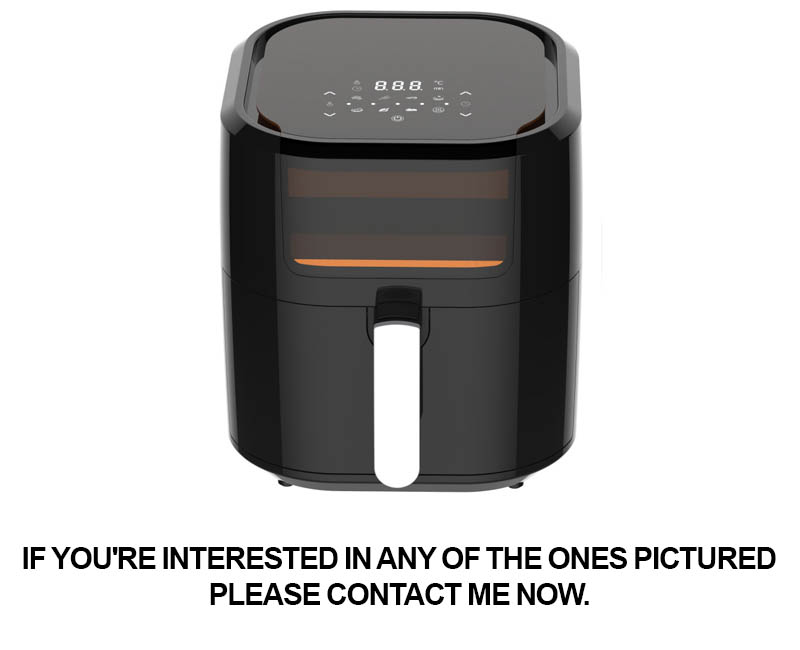
In the world of manufacturing, Original Design Manufacturing (ODM) stands as a cornerstone for brands looking to bring innovative products to market without the burden of establishing a full-fledged manufacturing infrastructure. When it comes to the Chinese ODM landscape, there are several compelling advantages that make it a preferred choice for many international companies.
One of the most significant advantages of opting for ODM in China is the cost savings. The Chinese manufacturing sector is renowned for its efficiency and scale, which translates into lower production costs. Labor costs, in particular, are significantly lower compared to many other regions, making it possible for companies to produce high-quality products at a fraction of the price.
China has been at the forefront of manufacturing for decades, which means its factories and workers have a wealth of experience in producing a wide range of products. This experience is invaluable when it comes to understanding the nuances of design, material sourcing, and production processes. It’s not just about making things; it’s about making them right, every time.
Chinese ODM factories are equipped with some of the most advanced technology and machinery available. This allows for precision in manufacturing, which is crucial for complex products like kitchen appliances. The use of cutting-edge equipment not only ensures high-quality outputs but also speeds up the production process, leading to shorter lead times.
The Chinese supply chain is one of the most robust in the world. With a vast network of suppliers, manufacturers can source materials quickly and efficiently. This not only ensures a steady supply of raw materials but also allows for flexibility in production, as manufacturers can easily adapt to changes in demand or specifications.
Chinese ODM providers are known for their ability to customize products to meet specific requirements. Whether it’s tweaking a design to fit a brand’s identity or creating a completely new product from scratch, Chinese manufacturers have the expertise to turn ideas into reality. This level of innovation is often what sets apart a product in a crowded market.
Despite the focus on cost-effectiveness, Chinese ODM factories do not compromise on quality. They adhere to international standards and have rigorous quality control processes in place. This ensures that the final product meets the expectations of the end consumer, even when produced at a large scale.
With growing environmental concerns, Chinese ODM factories are increasingly adopting green practices. This includes using sustainable materials, reducing waste, and minimizing energy consumption. By choosing ODM in China, companies can align their products with eco-friendly initiatives without incurring additional costs.
Partnering with Chinese ODM providers can also give companies a leg up in terms of market access. China’s strategic location in Asia makes it a gateway to other regional markets. By leveraging local expertise, companies can navigate local regulations, cultural nuances, and distribution channels more effectively.
The combination of cost savings, advanced technology, and a strong supply chain network in China means that products can be brought to market faster. This is crucial in today’s fast-paced consumer landscape, where being first to market can make all the difference in terms of market share and consumer perception.
As a company grows, its production needs may expand. Chinese ODM providers are well-equipped to handle scaling up production, from small batches to large-scale manufacturing. This scalability ensures that as a brand evolves, its manufacturing partner can keep pace with the growing demand.
In summary, the Chinese ODM advantage lies in its cost-effectiveness, extensive industry experience, advanced technology, robust supply chain, customization capabilities, adherence to quality standards, environmental responsibility, market access, time-to-market efficiency, and scalability. These factors make China a compelling destination for companies seeking to outsource their product manufacturing and bring innovative products to market.

The 30-Day Air Fryer Challenge: Our Focus
Nestled within the bustling landscape of kitchen innovation, we embarked on a mission to create something exceptional. Our focus was not just any product; it was a 30-day air fryer, a compact, versatile appliance designed to transform the way we cook and eat. This challenge was more than just about producing a new gadget; it was about redefining convenience and health in the kitchen.
Our vision was clear: to create an air fryer that was not only efficient but also easy to use, aesthetically pleasing, and affordable. We aimed to break the mold of traditional deep-frying, which is notorious for its high fat content, by offering a healthier alternative that still delivers on taste and texture.
The journey began with a thorough analysis of the current market. We identified a gap in the market for a product that could cater to those looking to adopt a healthier lifestyle without compromising on their favorite fried foods. This led us to the idea of the 30-day air fryer, a compact and powerful appliance that promised to be a game-changer for busy individuals and health-conscious families alike.
We knew that to make this product a reality, we had to be meticulous in our approach. The name “30-day” was chosen for a reason; it symbolizes the commitment to a healthier lifestyle, suggesting that this air fryer could be the catalyst for a transformative culinary experience. The number 30 also represents the period we dedicated to refining the design and functionality of the product, ensuring that it met our high standards and the needs of our target audience.
The design phase was a collaborative effort, involving experts from various fields. Engineers, chefs, and designers worked hand-in-hand to create a product that was both visually appealing and technically sound. We wanted the air fryer to be a kitchen staple that could be easily integrated into any kitchen space, regardless of its size.
One of the key aspects of our focus was the integration of smart technology. We envisioned a device that could not only fry but also bake, roast, and grill, providing users with a versatile cooking experience. The inclusion of smart features, such as an app for remote control and cooking recipes, was essential to make the 30-day air fryer an all-in-one solution for health-conscious consumers.
We also placed a strong emphasis on safety. The air fryer was designed with multiple safety features, including a cool-to-the-touch exterior, a non-toxic interior, and automatic shut-off to prevent overheating. These features were crucial in ensuring that users could enjoy their meals without any worries.
Another critical aspect of our focus was sustainability. We recognized the importance of using environmentally friendly materials and minimizing waste during production. The 30-day air fryer was designed to be durable, with the intention of lasting for years, thus reducing the need for frequent replacements.
Throughout the development process, we conducted extensive testing. Our team of product testers provided invaluable feedback that helped us fine-tune the air fryer’s performance. We were relentless in our pursuit of perfection, making adjustments to the design and cooking capabilities based on real-world usage scenarios.
As we approached the final stages of the 30-Day Air Fryer Challenge, we were excited about the potential impact our product could have. We were confident that this appliance would not only help people reduce their fat intake but also simplify their cooking routines.
The 30-day air fryer was not just a product; it was a statement. It was a testament to our commitment to innovation, health, and sustainability. It was our answer to the ever-growing demand for healthier eating options without sacrificing flavor or convenience.
In conclusion, the 30-Day Air Fryer Challenge was our focus, a mission to create a product that would change the way people cook and live. It was a journey that required dedication, collaboration, and a deep understanding of consumer needs. The result was a product that we hope will inspire others to embrace healthier habits in the kitchen.
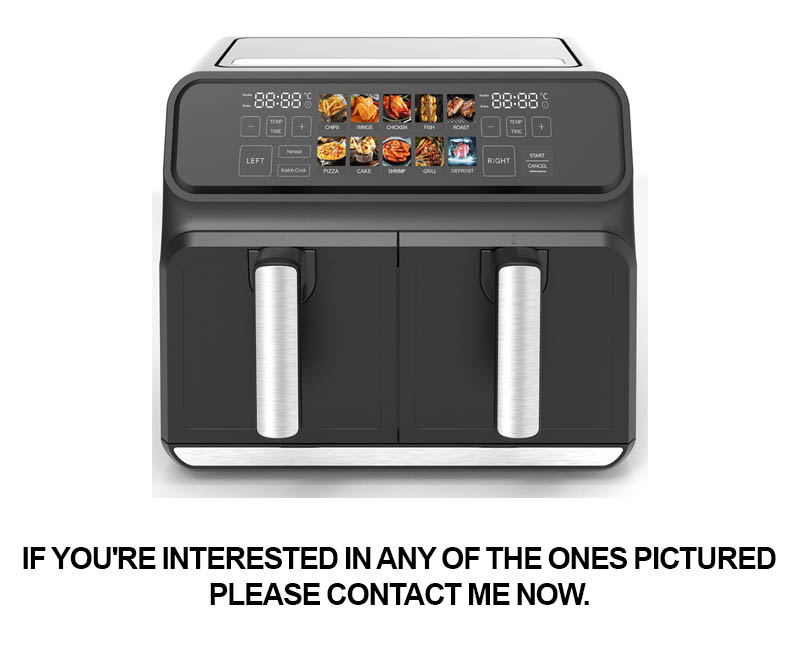
In the ever-evolving landscape of kitchen appliances, the air fryer has emerged as a game-changer, transforming the way we cook and eat. Our focus, the 30-Day Air Fryer Challenge, is centered around conceptualizing a product that not only embodies the essence of this culinary revolution but also pushes the boundaries of innovation. Here’s a glimpse into our thought process and the factors that guide our design.
The air fryer’s appeal lies in its ability to mimic deep-frying with minimal oil, thus offering a healthier alternative to traditional cooking methods. Our challenge is to capitalize on this trend by creating an air fryer that not only meets the health-conscious consumer’s needs but also enhances convenience and efficiency.
One key aspect of our conceptualization is the emphasis on usability. We envision an air fryer that is intuitive and user-friendly, with a sleek design that fits seamlessly into any kitchen environment. The controls should be simple, with a clear interface that allows users to easily select their desired cooking settings and times.
Another critical element is the versatility of the appliance. We believe that an air fryer should be more than just a frying machine; it should be a versatile tool that can handle a variety of cooking tasks. This means incorporating adjustable temperature controls, different basket sizes, and perhaps even modular attachments that can transform the device into a multi-functional cooking station.
Safety is paramount in our design process. We’re considering features like cool-touch handles and a transparent window that allows users to monitor their food without opening the door, which can disrupt the cooking process and lead to splatters. A built-in timer with an auto shut-off function is also essential to prevent overcooking and potential hazards.
Energy efficiency is a significant consideration. We’re exploring advanced technologies that reduce energy consumption without compromising performance. This includes optimizing the airflow system for better heat distribution and exploring eco-friendly materials that can contribute to the appliance’s overall sustainability.
The aesthetic appeal of the air fryer is also important. We’re aiming for a design that is as attractive as it is functional, with a finish that complements modern kitchen aesthetics. The color palette, texture, and overall form factor will be carefully chosen to ensure the appliance is not only a cooking tool but also a stylish addition to the kitchen.
Innovation is at the heart of our conceptualization. We’re looking at ways to incorporate smart technology, such as connectivity to mobile devices for remote monitoring and recipe suggestions. This would not only enhance the user experience but also keep the appliance updated with the latest features and improvements.
Moreover, we’re considering the environmental impact of the product throughout its lifecycle. This means designing for durability to extend the product’s lifespan, as well as exploring recycling and disposal options for the materials used.
Finally, we’re not overlooking the importance of the packaging. A well-designed box that communicates the product’s benefits and encourages eco-friendly practices can significantly influence the consumer’s first impression.
Our 30-Day Air Fryer Challenge is an ambitious project, but we’re confident that our thoughtful conceptualization, which combines health, convenience, safety, efficiency, design, innovation, and sustainability, will yield a product that resonates with consumers and contributes to the ongoing air fryer revolution.
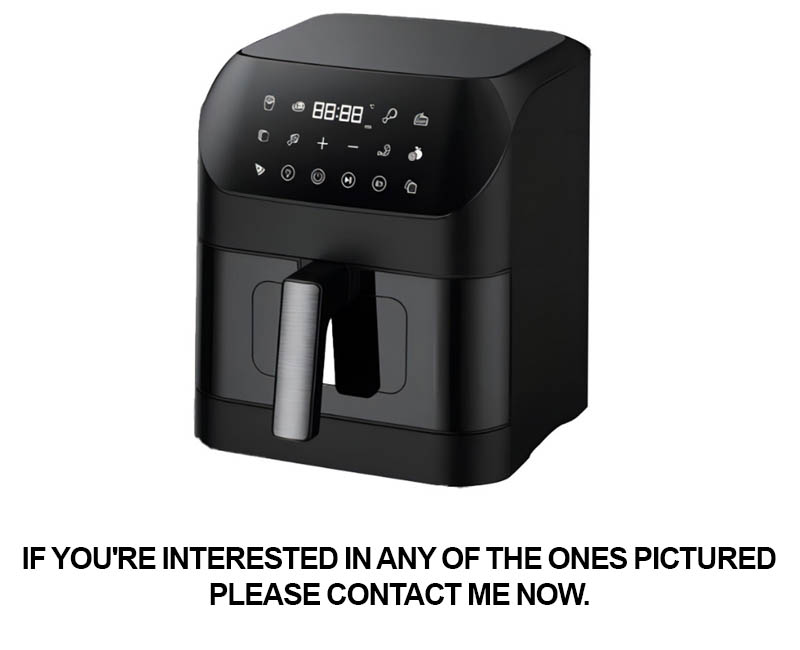
In the ever-evolving world of kitchen appliances, staying ahead of industry trends is crucial. Let’s delve into the latest data and insights that are shaping the landscape of the air fryer market.
The Air Fryer Market’s Rapid GrowthSales figures and market research indicate a significant surge in the demand for air fryers. Consumers are increasingly interested in healthier cooking methods that reduce oil usage, and air frying is stepping into the spotlight as a solution.
Health and Wellness Drive DemandHealth-conscious consumers are seeking alternatives to traditional frying methods, which often result in high-calorie, oil-laden dishes. Air fryers offer a way to enjoy fried foods with a fraction of the fat, making them a popular choice for those adhering to low-carb, paleo, and keto diets.
Innovation in TechnologyTechnology has played a pivotal role in the air fryer’s rise. Modern units are equipped with features like adjustable temperature settings, digital displays, and even Bluetooth connectivity to smartphones for remote operation. These advancements are not just about convenience but also about giving users greater control over their cooking process.
Sustainability and Eco-Friendly TrendsThe sustainability movement has influenced consumer preferences in the kitchen. Air fryers, which consume less energy than conventional ovens and reduce food waste, are aligning with the eco-friendly ethos that many consumers embrace.
Smart Home IntegrationThe integration of kitchen appliances with smart home technology is on the rise. Air fryers that can be controlled via apps or voice commands are becoming more common, offering a seamless blend of modern convenience and traditional cooking methods.
Global Market DynamicsMarket research shows that while the United States and Europe are leading the air fryer market, Asia and Latin America are experiencing rapid growth. This shift reflects a global trend towards healthier lifestyles and the adoption of new technologies.
Competitive LandscapeThe competitive landscape in the air fryer market is diverse, with both established appliance brands and startups entering the space. This competition is driving innovation and pushing manufacturers to offer more advanced features and competitive pricing.
Consumer PreferencesConsumer preferences are shifting towards air fryers with larger capacities, versatile cooking modes, and energy-saving capabilities. The ability to cook a variety of foods, from vegetables to meats to desserts, is a key factor in the popularity of these appliances.
E-commerce’s RoleThe rise of e-commerce has had a profound impact on the air fryer market. Online platforms have made it easier for manufacturers to reach consumers and for consumers to access a wider range of products. This has also led to increased consumer reviews and ratings, influencing buying decisions.
Regulatory Changes and CertificationsRegulatory changes and certifications are playing a larger role in the air fryer market. Manufacturers must comply with safety standards and certifications to ensure their products meet consumer expectations and regulatory requirements.
Emerging Markets and New OpportunitiesEmerging markets, particularly in Asia and Africa, present new opportunities for growth. These markets are ripe for the introduction of air fryers as they seek to adopt healthier cooking methods and modern kitchen technologies.
In conclusion, the air fryer market is driven by a combination of health and wellness trends, technological innovation, and global consumer demand. Understanding these trends and data insights is vital for anyone looking to stay ahead in this dynamic industry.
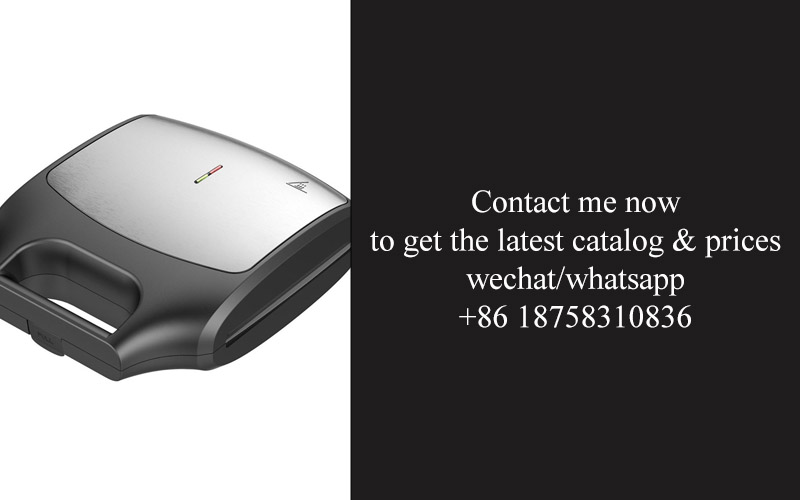
Designing an innovative air fryer is a journey that blends creativity with practicality, technology with aesthetics. Here’s an inside look at how we transform a sketch into a reality.
The initial spark of inspiration often comes from observing consumer needs and market gaps. We brainstorm ideas, considering factors like convenience, efficiency, and the latest cooking trends. This stage involves a lot of sketching, with designers quickly sketching out various concepts to explore different forms and functionalities.
Once a concept catches our eye, we delve deeper into its potential. We create detailed drawings that outline the air fryer’s dimensions, components, and user interface. This is where we start to think about the ergonomics—how the fryer will feel in the user’s hands, the placement of buttons, and the overall user experience.
The next step is to refine the design through 3D modeling. This allows us to visualize the product in a virtual space, making it easier to identify any potential issues before moving to the physical production phase. We experiment with different materials and finishes, ensuring the design is not only visually appealing but also durable and easy to clean.
During the 3D modeling phase, we also simulate the air fryer’s performance. We test how the fan distributes heat, how the basket rotates, and the overall cooking efficiency. These simulations help us optimize the design for the best possible cooking results.
With the design solidified, we move on to prototyping. This involves creating a physical model of the air fryer that closely matches the final product. Prototypes are often made using materials like plastic or metal, depending on the final production requirements. This stage is crucial for testing the design in real-world conditions.
User testing is a pivotal part of the process. We gather a group of people who represent our target demographic and have them use the prototype. We observe how they interact with the fryer, noting any difficulties or areas for improvement. This feedback is invaluable in fine-tuning the design.
As we iterate on the design, we also consider manufacturing constraints. We work closely with our manufacturing partners to ensure that the design is feasible to produce at scale. This includes looking at the complexity of the parts, the cost of materials, and the efficiency of assembly.
Once the design is deemed production-ready, we move into the manufacturing phase. Here, we focus on the production line’s efficiency and the quality control process. Every step of the assembly is carefully monitored to ensure consistency and meet our high standards.
The journey from sketch to reality is a complex one, requiring a multidisciplinary team that includes designers, engineers, and production experts. It’s a process that demands attention to detail, creativity, and a deep understanding of both the product and the market it serves.
Throughout this journey, we remain focused on innovation. We’re always looking for ways to improve the design, whether it’s through new materials, advanced technology, or user-friendly features. The end goal is to create an air fryer that not only meets the needs of today’s consumers but also sets the stage for what’s to come in the world of kitchen appliances.
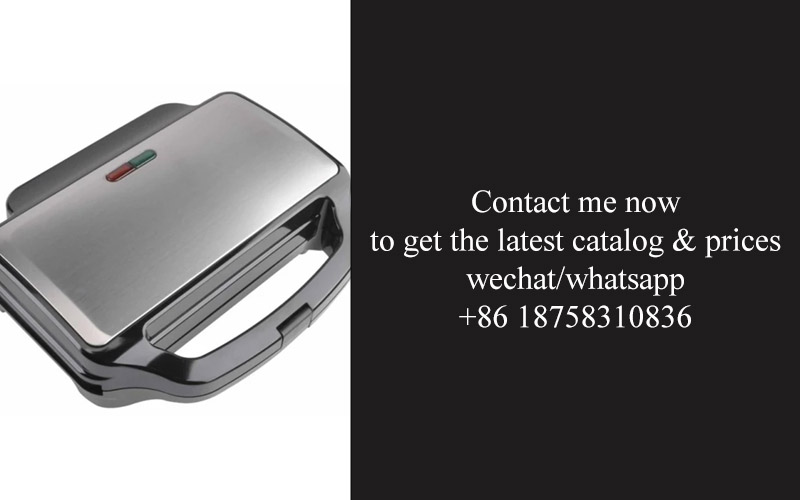
In the world of kitchen appliances, the quest for excellence is paramount. Ensuring that every product that leaves the factory meets the highest standards of quality is not just a responsibility—it’s a commitment. Let’s delve into the intricacies of quality control and how it shapes the excellence of our products.
The meticulous inspection of raw materials is the cornerstone of quality control. We scrutinize every component, from the smallest screw to the largest electronic component, to ensure they meet our stringent specifications. This initial screening helps prevent defects from ever making their way into the manufacturing process.
As the product takes shape, our engineers and technicians monitor the assembly line with a keen eye. They watch for any signs of deviation from the design specifications, whether it’s a misaligned part or a component that doesn’t fit correctly. Immediate corrective actions are taken to rectify these issues before they can escalate.
The testing phase is where the product’s true capabilities are evaluated. Our air fryers undergo a battery of tests to ensure they perform as advertised. These include thermal performance tests to guarantee even cooking, safety checks to ensure no electrical hazards, and durability tests to ascertain that the appliance can withstand the rigors of everyday use.
User experience is a crucial aspect of quality control. We conduct user testing sessions with a diverse group of individuals to gather feedback on the ease of use, the efficiency of the cooking process, and the overall satisfaction with the product. This feedback is invaluable in fine-tuning our designs and ensuring that our customers have a seamless experience.
No matter how advanced the technology, there’s always a chance for human error. That’s why we have a dedicated team of quality assurance experts whose sole job is to catch any mistakes that may have been overlooked. They meticulously inspect every unit, looking for anything that doesn’t meet our standards.
Innovation doesn’t stop at the product level; it extends to our quality control processes as well. We continuously invest in new technologies and methodologies that can improve our efficiency and accuracy. For instance, we’ve implemented advanced computer-aided design (CAD) software to simulate the performance of our products under various conditions, allowing us to identify potential issues early in the design phase.
The quality of the packaging is just as important as the quality of the product itself. We use high-quality materials that protect the appliance during transit and ensure that it arrives at the customer’s doorstep in perfect condition. Our packaging team is trained to inspect each box before it’s sealed, ensuring that there are no gaps or weak spots that could compromise the product’s integrity.
In the event that a defect does slip through, our customer service and after-sales support teams are ready to assist. We offer a comprehensive warranty program that covers defects in materials and workmanship, and we have a streamlined process for handling returns and repairs.
The pursuit of excellence in quality control is an ongoing journey. It requires a combination of cutting-edge technology, skilled personnel, and a relentless focus on detail. By adhering to these principles, we can confidently stand behind our products and assure our customers that they are investing in a high-quality, reliable appliance.

In the world of international manufacturing, finding the right partner can make all the difference. The China connection is a cornerstone of success for many businesses, especially in the fast-paced and highly competitive kitchen appliance industry. Building a strong partnership with a Chinese Original Design Manufacturer (ODM) can lead to a range of benefits that are both tangible and intangible. Here’s how:
The first thing to recognize about the China connection is its sheer scale. China is the world’s largest manufacturing hub, with factories capable of producing goods in vast quantities and with rapid turnaround times. This is particularly advantageous for companies looking to get their products to market quickly or scale up production to meet soaring demand.
In the kitchen appliance sector, where innovation is key, the China connection brings access to a vast talent pool. Chinese ODMs often employ skilled engineers and designers who are not only adept at following designs but also at pushing the boundaries of innovation. This synergy between international brands and local expertise can lead to the creation of unique, market-leading products.
Cost efficiency is another critical factor. The cost of labor in China is significantly lower than in many other countries, allowing companies to reduce production costs without compromising on quality. This is particularly important for brands looking to offer high-quality appliances at competitive prices.
But it’s not just about the numbers. A strong partnership with a Chinese ODM is built on trust and open communication. Regular meetings, both in-person and through digital platforms, are crucial for ensuring that the ODM understands the brand’s vision and can deliver the product that meets its exact specifications.
Quality control is also a cornerstone of this partnership. Chinese ODMs are well-versed in the latest quality assurance techniques and are often ISO-certified, ensuring that every product that leaves their facilities meets the highest standards. This is vital for brands that want to maintain a reputation for excellence and customer satisfaction.
Collaboration also extends to the supply chain. Chinese manufacturers have established relationships with suppliers that can deliver the necessary materials at a moment’s notice. This just-in-time inventory system reduces lead times and minimizes the risk of stockouts, which is essential for keeping up with consumer demand.
The cultural and linguistic similarities between China and other Asian countries can also be a significant advantage. This shared heritage can make communication smoother and collaboration more effective. Chinese ODMs often have experience working with international brands and are well-versed in the nuances of global markets.
Moreover, the China connection can open doors to new markets. Chinese manufacturers are familiar with both domestic and international regulations and can help navigate the complexities of importing and exporting goods. This can be particularly beneficial for brands looking to expand their presence in the European or American markets.
Innovation is fostered by the diverse range of technologies and materials available in China. From cutting-edge robotics to traditional craftsmanship, Chinese ODMs have the resources to experiment with new designs and materials, which can lead to the development of products that are not only functional but also aesthetically pleasing and sustainable.
The environmental commitment of Chinese manufacturers cannot be overlooked. Many are investing in green technologies and sustainable practices to reduce their carbon footprint. This aligns with the growing demand for eco-friendly products and can enhance a brand’s reputation as a responsible corporate citizen.
Finally, the China connection provides a platform for continuous improvement. With access to real-time feedback from both local consumers and international markets, brands can refine their products and strategies to stay ahead of the curve.
In conclusion, the China connection for ODM partnerships is a multifaceted advantage. It offers cost savings, access to a skilled workforce, efficient supply chains, cultural understanding, and a commitment to quality and innovation. For brands looking to succeed in the kitchen appliance industry, building a strong partnership with a Chinese ODM is not just a strategic move; it’s a key to unlocking new opportunities and achieving lasting success.
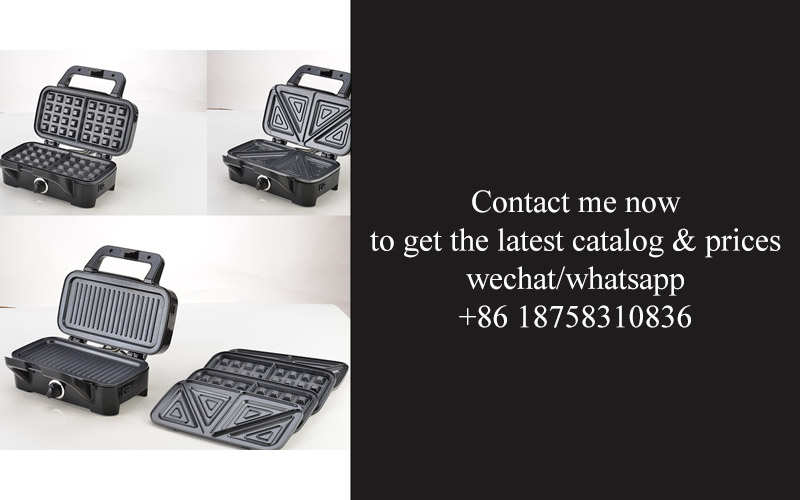
The air fryer we’ve been meticulously crafting over the past 30 days is finally ready to be unveiled. This isn’t just any air fryer; it’s the culmination of our vision, our research, and our commitment to innovation. Let’s take a closer look at the final product and the journey that brought it to life.
From the sleek, modern design that promises ease of use to the cutting-edge technology that ensures healthful cooking, every aspect of this air fryer has been carefully considered. The exterior is a blend of functionality and aesthetics, with a durable finish that not only looks great but also withstands the rigors of everyday use.
The handle is ergonomically designed, providing a comfortable grip that makes lifting and lowering the basket a breeze. The control panel is intuitive, with clear buttons and a digital display that makes setting the desired temperature and cooking time straightforward. The LED lights inside the unit not only add a touch of elegance but also illuminate the cooking process, allowing you to monitor your food with ease.
Inside, the cooking basket is made from high-quality, non-stick material that ensures food releases perfectly without sticking. The basket itself is designed to promote even air circulation, which is crucial for achieving that crispy outer layer and tender interior that air frying is known for.
One of the standout features of our air fryer is its versatility. It can handle a wide range of foods, from crispy French fries and golden chicken wings to healthier options like roasted vegetables and baked fish. The adjustable temperature control allows for precision cooking, ensuring that each dish is cooked to perfection.
We’ve also incorporated safety features that are often overlooked in other air fryers. The unit automatically shuts off if it’s left unattended for an extended period, preventing any potential hazards. The cool-touch handles and base mean you can safely remove the basket from the unit without burning your hands.
The design process was an iterative journey, with countless hours spent in the lab testing and refining each component. We started with sketches and prototypes, experimenting with different shapes and sizes to find the optimal balance between cooking capacity and ease of storage. The prototypes were then subjected to rigorous testing, with our team tasting and evaluating the performance of each iteration.
One key aspect we focused on was noise reduction. Air fryers can be quite loud, but we wanted to create a product that was as quiet as possible during operation. This required careful engineering of the fan and heat exchanger, ensuring that they worked efficiently without generating an excessive amount of noise.
Another challenge was the internal heating element. We needed a solution that would evenly distribute heat throughout the basket without overheating certain areas. After several design changes and testing sessions, we landed on a heating element that provides consistent and even cooking, regardless of the size or type of food being prepared.
The final product is not just a collection of features and functions; it’s a statement. It’s a testament to our dedication to creating a product that not only meets the needs of the consumer but also exceeds expectations. The 30-Day Air Fryer is designed to be a staple in any kitchen, a tool that not only makes cooking healthier but also more enjoyable.
As we unveil this final product, we’re excited to see how it will be received by the market. The journey has been long and filled with challenges, but the end result is something we’re incredibly proud of. It’s not just an air fryer; it’s a piece of technology that could very well change the way people cook and eat.
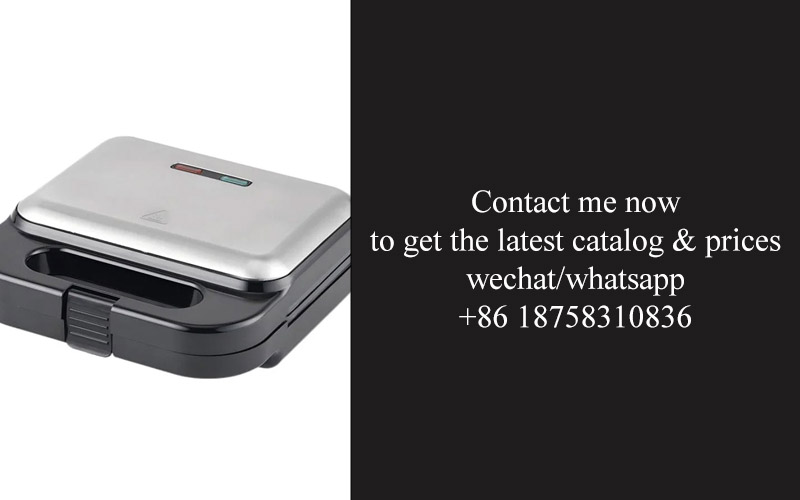
The response from consumers has been a whirlwind of excitement and curiosity. People are drawn to the sleek design and the promise of healthier cooking methods. We’ve received comments ranging from praise for the innovative features to queries about the product’s capabilities. Here’s a snapshot of the early feedback:
“I love how compact it is!” Users are delighted by the air fryer’s size, noting that it fits perfectly on their kitchen countertops without taking up too much space.
“The temperature control is spot on.” Customers are impressed with the precise heat settings, which allow them to achieve the perfect crispness without overcooking their food.
“The cooking time is surprisingly quick.” Many users have found that the air fryer reduces cooking times compared to traditional methods, making it a convenient addition to their daily routine.
“The recipe book is a game-changer.” The included recipe book has been a hit, offering a variety of recipes that make the most of the air fryer’s capabilities.
“The build quality feels solid.” Users have commented on the sturdy construction and the feeling that the air fryer is made to last.
“The energy efficiency is impressive.” Customers are pleased to learn that the air fryer uses less energy than a conventional oven, contributing to lower utility bills.
“I’m amazed at how easy it is to clean.” The non-stick coating and the removable parts make cleaning a breeze, which is a significant plus for busy households.
“The noise level is surprisingly low.” Despite the heat it generates, the air fryer operates quietly, which is a pleasant surprise for many users.
“The portability is a big plus.” Some users have mentioned that they enjoy using the air fryer on trips or in different rooms of their homes, appreciating its portability.
“The price is very reasonable.” Despite the advanced technology and features, the air fryer has been well-received for its competitive pricing.
“The customer service has been excellent.” Users have praised the support team for their helpfulness and quick response to any questions or concerns.
“I would definitely recommend this to a friend.” This sentiment is echoed by many, signaling the air fryer’s potential for strong word-of-mouth marketing.
“The health benefits are a major draw.” With a focus on healthier cooking, users appreciate the air fryer’s ability to cook with less oil, leading to dishes that are lower in calories.
“The app integration is a nice touch.” For tech-savvy users, the ability to control the air fryer via an app adds an extra layer of convenience.
“The warranty is reassuring.” The inclusion of a comprehensive warranty has given users peace of mind, knowing that the product is backed by the manufacturer.
The early feedback has been overwhelmingly positive, and it’s clear that the 30-Day Air Fryer is resonating with consumers looking for a versatile, healthy, and efficient kitchen appliance.
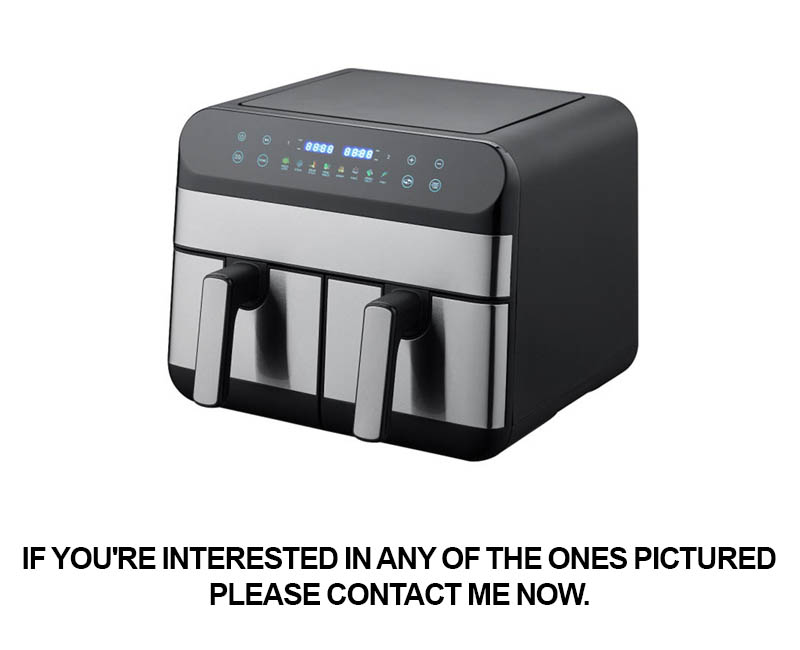
The air fryer market has seen a remarkable evolution over the years, transforming from a niche appliance to a staple in many kitchens. As we look ahead, the future of air fryers is as promising as it is innovative. Here’s a glimpse into what’s next for this popular kitchen gadget.
The integration of smart technology is on the rise. Air fryers are no longer just cooking devices; they are becoming part of the smart home ecosystem. Expect to see models that can be controlled via smartphone apps, offering features like automatic cooking programs, temperature adjustments, and even live cooking updates.
Energy efficiency is a growing concern, and air fryers are not immune to this trend. Newer models are likely to incorporate advanced insulation and heating elements that reduce energy consumption without compromising performance. This could mean longer cooking times with lower energy bills.
Health and wellness are at the forefront of consumer minds, and air fryers are poised to become even healthier. Innovations in non-stick coatings and the use of healthier cooking oils could make these appliances even more appealing to health-conscious consumers.
Customization is key. Air fryers are likely to offer more personalized cooking experiences, with adjustable settings for different types of food, cooking times, and temperatures. This could include presets for various cuisines or even the ability to program specific cooking sequences.
Sustainability is a buzzword that’s not going away anytime soon. Manufacturers may start focusing on the lifecycle of air fryers, from the use of recycled materials in construction to the development of more eco-friendly packaging and disposal methods.
Safety features are always a priority, and the future holds even more sophisticated safety mechanisms. Think of features like automatic shut-off when the fryer is left unattended, advanced overheating protection, and child locks to prevent accidental use.
The rise of sous-vide cooking has been a game-changer for food enthusiasts, and air fryers could soon integrate this technique. By combining the precise temperature control of sous-vide with the fast cooking capabilities of an air fryer, users could achieve professional-level results at home.
Air fryers are likely to become more versatile, with attachments and accessories that expand their capabilities. Imagine having a baking pan, a dehydrator, or even a pizza oven attachment for your air fryer, turning it into a multi-functional kitchen appliance.
Collaborations with chefs and culinary experts could lead to the development of specialized air fryer models. These could include features that cater to specific cooking styles or ingredients, making air fryers even more tailored to individual preferences.
Lastly, the market will continue to see a diverse range of air fryer sizes and capacities to suit different household needs. From compact models perfect for single people or small apartments to large-capacity units suitable for families or entertaining, the future of air fryers is about catering to all types of users.
In summary, the future of air fryers is about innovation, sustainability, and customization. As technology continues to advance, these appliances will not only improve the way we cook but also become an integral part of our daily lives.
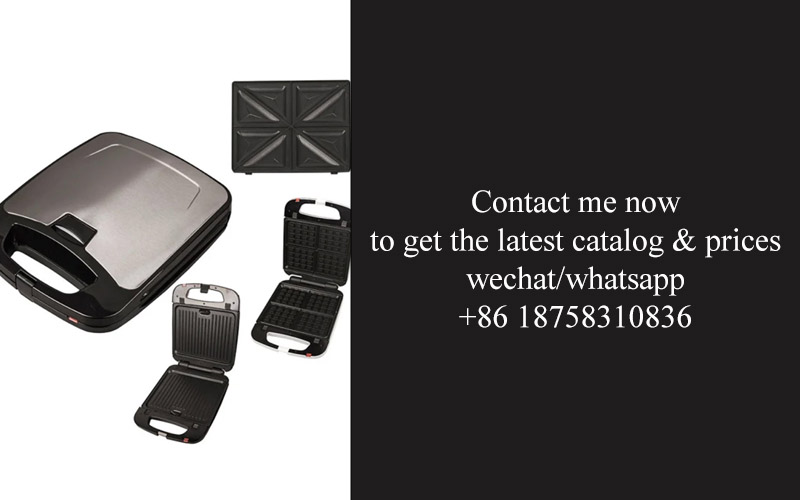
Navigating through the intricate landscape of Original Design Manufacturing (ODM) has been a transformative journey. Reflecting on the experience, it’s clear that the ODM process has not only shaped our product but also deepened our understanding of the appliance industry. Let’s delve into the essence of this experience, encapsulating the key moments and learnings in a concise narrative.
The ODM process began with a vision of innovation. We set out to create an air fryer that not only met market demands but also set new standards in design and functionality. It was a collaborative effort, with our design team brainstorming ideas that were both novel and practical. We were not just crafting a kitchen appliance; we were crafting an experience.
Throughout the design phase, we were meticulous in our approach. Every feature, from the control panel layout to the material choice, was scrutinized for its potential impact on user experience. We held numerous design reviews, where every nuance was discussed and debated, ensuring that our product would resonate with the target audience.
The journey took us through various stages, each bringing its own set of challenges. Prototyping was a particularly critical phase. We developed multiple versions of our air fryer, each with subtle modifications based on feedback from our team and simulated user scenarios. The iterative process allowed us to fine-tune the design, addressing issues before moving to the next stage.
Quality control was paramount. We understood that the integrity of the product would be scrutinized from the moment it hit the market. Our engineers implemented rigorous testing protocols, from component level to full product functionality. Each test was a step closer to ensuring that the final product would be a beacon of excellence.
The selection of the right manufacturing partner was crucial. We chose China for its robust manufacturing infrastructure and the ability to deliver high-quality products at competitive prices. The Chinese ODM landscape offered a vast array of suppliers with specialized skills, which we leveraged to find the perfect fit for our project.
Our collaboration with Chinese manufacturers was marked by open communication and a shared commitment to quality. Regular meetings were held to discuss progress, resolve any issues, and ensure that our vision was being accurately translated into reality. The relationship was built on trust, which is essential in ODM, where the manufacturer often becomes an extension of the brand.
The final product, the 30-Day Air Fryer, is a testament to our journey. It is sleek, user-friendly, and packed with features that cater to the modern consumer’s needs. The design process was not just about creating a functional appliance; it was about crafting a story that resonates with our customers.
Receiving market feedback early on has been enlightening. The response has been overwhelmingly positive, with many praising the air fryer’s innovative design and the ease of use. This early validation reinforces our belief in the product and the process we followed.
Looking ahead, the future of air fryers appears promising. We are already exploring new technologies and functionalities that could be integrated into our next iteration. The market is evolving, and we are committed to staying ahead of the curve.
In conclusion, the ODM experience has been a comprehensive learning curve. It has taught us the importance of innovation, collaboration, and relentless pursuit of quality. The journey from concept to market-ready product has been a series of interconnected steps, each contributing to the final masterpiece. As we move forward, we carry with us the knowledge that great products are not just made; they are crafted with passion and precision.